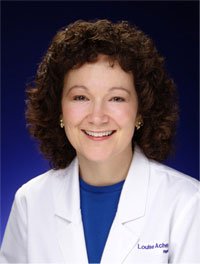On a freezing cold night in February 1992, the clock above me reads 11:36 pm as the heavy metal reinforced door swooshes closed. The last pharmacy technician has headed home, leaving me alone in the basement-level pharmacy of Yakima Valley Memorial Hospital for the next 5 hours. But the quiet doesn’t last. An angry buzz erupts from the small cubicle of our tiny Poison Control Center – the insistent, distinctive sound of the Poison Control phone. Moving quickly to sit down in front of the dedicated microfiche reader, I pick up the receiver of the red phone on the desk to my right. “Hello, this is Poison Control. How can I help you?”
Every 8 seconds, someone in the United States calls a Poison Control center, nearly 11,000 calls a day. 90% of callers get the help they need without going to the ER or to the doctor. According to Alexander Garrard, PharmD., a Toxicologist and the Clinical Managing Director of the Washington Poison Center, “Every $1 spent on poison center services saves $13 by decreasing direct medical costs from avoiding visits to the ER, from shorter stays in the hospital, and fewer lost work days.”
My caller tonight was a distraught young man whose girlfriend grabbed a bottle of what she thought was cough syrup and took a big swig of it, with distressing results. Similar to over 90% of poisonings, this episode occurred at home, and with the resources of our Poison Control centers I was able to identify the offending substance quickly and start appropriate treatment, keeping her from needing additional and more expensive care at a hospital or urgent care center.
March 15-21st is the 53rd observance of National Poison Prevention Week, one of the longest continuously running health and safety programs in the United States. It’s also one of the most cost-effective: today’s 55 poison centers around the country save over $1.8 billion every year in reduced direct medical costs, lost work and productivity.
On that night in 1992 I worked for one of 4 hospitals in the state housing a poison center, along with St. Luke’s Hospital in Spokane, Mary Bridge Children’s Hospital in Tacoma, and Children’s Hospital in Seattle. Due to funding issues, later that year the state legislature voted to consolidate the 4 centers into one, and by 1995 the transition to the Washington Poison Center was complete. In 2005 a national toll-free hotline was established, connecting callers to the poison center nearest them and is still used today: 1-800-222-1222.
In 2014 the Washington Poison Center answered nearly 65,000 calls, an average of 174 calls per day, saving Washington State taxpayers, businesses and insurers over 10 million dollars. Cosmetics and personal care products were the leading cause of poisonings last year, with pain medicines the second most common exposure. Over 80% of poisonings were unintentional and more than 56% of poison exposures involved children younger than 6 years old.
Two disturbing trends seen by the Poison Control Center in our state and others nationwide are increased exposures in young children to concentrated nicotine from e-cigarettes and to cannabis (marijuana) products. During 2014, in Washington State 30% of nicotine exposures and 14% of cannabis exposures occurred in children under 6 years old. That’s an increase of over 1000% in calls just about e-cigarettes and liquid nicotine from 2012 to 2014.
Dr. Garrard describes one reason why: “E-cigarettes are not required to be child-resistant, which makes their concentrated nicotine contents easily accessible to busy fingers attracted by bright colors and appealing scents and flavors.” But taking apart the vaporizer or “vape” and putting it in their mouth is not the only way a child can ingest liquid nicotine. Refill bottles of candy flavored nicotine liquid are even more dangerous. States Dr. Garrard, “one 15ml bottle of liquid nicotine used to refill e-cigarettes contains 540mg of nicotine, the same amount found in 42 cigarettes.”
According to the American Association of Poison Control Centers, just one teaspoonful of liquid nicotine could be lethal to a child. Despite these dangers, there are no standards in place that address or require childproof packaging of either liquid nicotine or e-cigarettes. After the death of a 1 year-old in New York last December from accidentally ingesting liquid nicotine, there is current pending legislation in many states, including Washington.
More information about e-cigarettes and the “Top Ten” exposures of 2014 is at the Washington State Poison Center website, www.wapc.org, or at www.poisonprevention.org.

